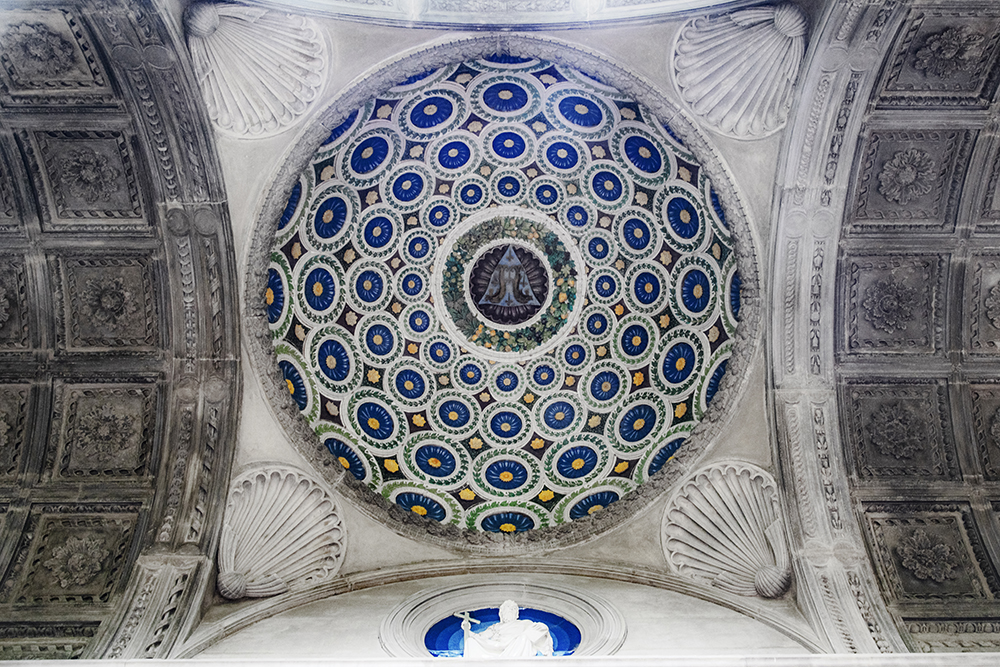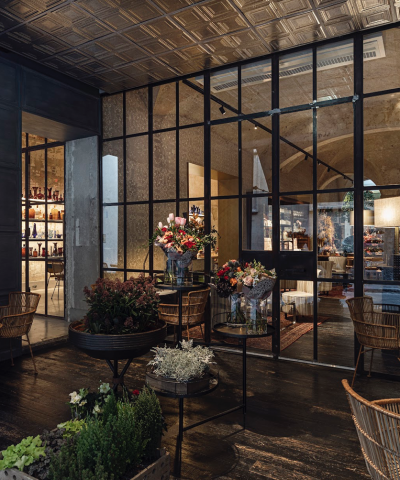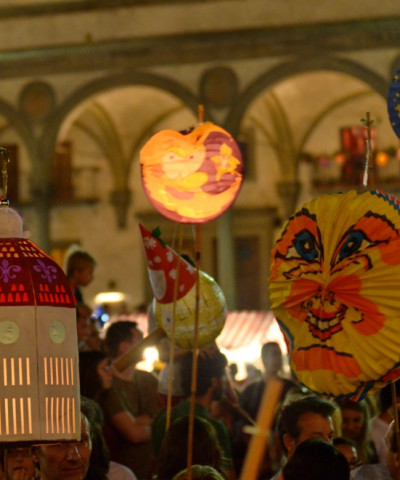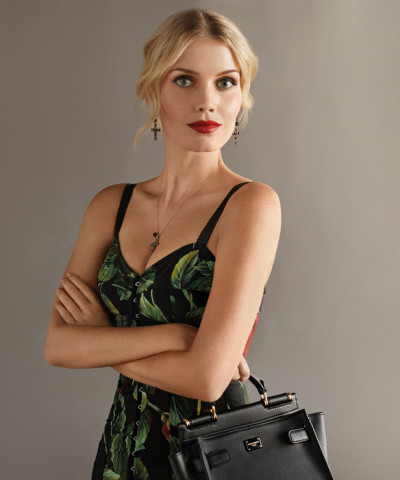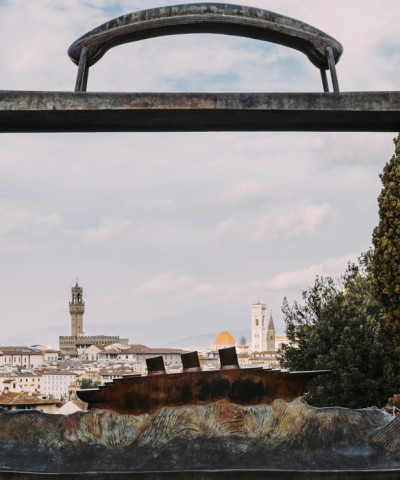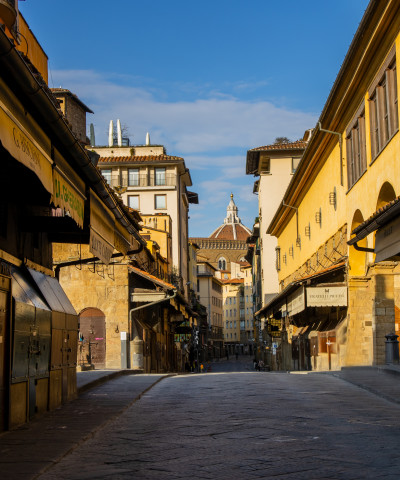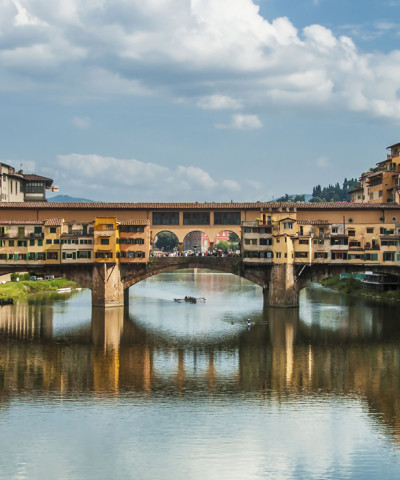Multicolor Florence
Beyond the stones we will take you to Florence in color
Michelangelo first and then Romanticism are to “blame” for Florence appearing so austerely colorless.
The Renaissance genius was certainly unaware that the ancient Romans and Greeks applied vibrant colors atop their white marble statues, but for the 19th-century philosophers, in search of new values, the Middle Ages, with their spirituality and municipal freedom, must have been like the light at the end of the “tunnel”.
Napoleon’s imperial style, pastel tones, the Rococo’s ephemeral decorations, everything was wiped away.
As part of the city’s beautification when Florence became the capital of Italy, in addition to reintroducing the use of pietra serena, the grey sandstone which had been extensively used by Brunelleschi, all building facades where covered with a yellow-ochre wash typical of the pietraforte stone. Actually, Florence had been a very colorful city once. In the Middle Ages, the facades, if not made of stone, were vibrantly painted, statues were covered in gold, walls were decorated and garments were dyed.
The wealthy used strong and durable colors, the poor had to be content with unstable and dull tones.
Here is a tour of Florence to explore its most colorful spots and we recommend also a visit of Palazzo Pitti, where there are rooms decorated in lilac and old rose. Don’t miss Eleanor’s apartments at Palazzo Vecchio, you can tell from the “garden” effect.
The "Lorena Green" was introduced by the Grand Duke Pietro Leopoldo when, in the 1700s, he had his Kaffeehaus built by Zanobi del Rosso in the Boboli Gardens. He also introduced the Florentines to hot chocolate and coffee, along with pastel tones and the Rococo style
It was called “the color of air”, the Lorena’s favorite green pastel tone, which makes the Uffizi Gallery’s grand staircase look “liquid”. It was chosen by Grand Duke Pietro Leopoldo, young and enlightened, when he opened the Gallery to the public
The Tribuna of the Uffizi symbolizes the four elements, united by he crimson red (cochineal extract) velvet lining the room’s walls. It was the world’s first museum,a cabinet of wonder, in which red Fire stood also for the burning passion between Francesco I and Bianca Cappello
Antique dealer Stefano Bardini decorated the rooms of his palazzo, the current Bardini Museum, in light-blue tones, inspired by the lily-blue so popular with Russian aristocrats. The color was considered to be so shocking at the time that it was called “Bardini Blue”
In the 1600s, red took on a more iron-like tone. An original sample of fabric and natural pigments from the 1600s were used to recreate that exact shade of red, which now decorates the new Caravaggio rooms at the Uffizi Museum
Porphyry was the marble of the emperors, whose position was marked by a disc. When Cosimo was buried in the Church of San Lorenzo, his tomb, in addition to the disk, was decorated with a green and white marble inlay on the high altar’s pillar
Rooms extending into gardens, courtyards that multiply endlessly, baths flowing into lakes and lush vegetation. To create the impression of greater space, all you need is illusion. The trompe l’oeil was very popular in the 1600s, such as in the rooms of the elegant yet not too large Casa Martelli
Luca della Robbia was the first to make earthenware statues and reliefs by perfecting the glazed terracotta technique. He used silicon, tin and lead oxide to produce intense, smooth and brilliant whites and blues. Like the round relief panels on the Ospedale degli Innocenti’s facade
René of Anjou arrived in Florence on July 4, 1442, in search of allies to take Jerusalem back. As a good omen, the astral sky passing over Florence that day was painted in both Santa Croce’s Pazzi Chapel and in San Lorenzo’s Medici Chapels
In cover:
In the middle, the coat of arms with two dolphins of the Pazzi family, exiled from Florence for attempting to overthrow the Medici. This is the dome of the portico facing the family’s chapel in the Church of Santa Croce. Luca della Robbia created the elegant blue glazed terracotta decorations






